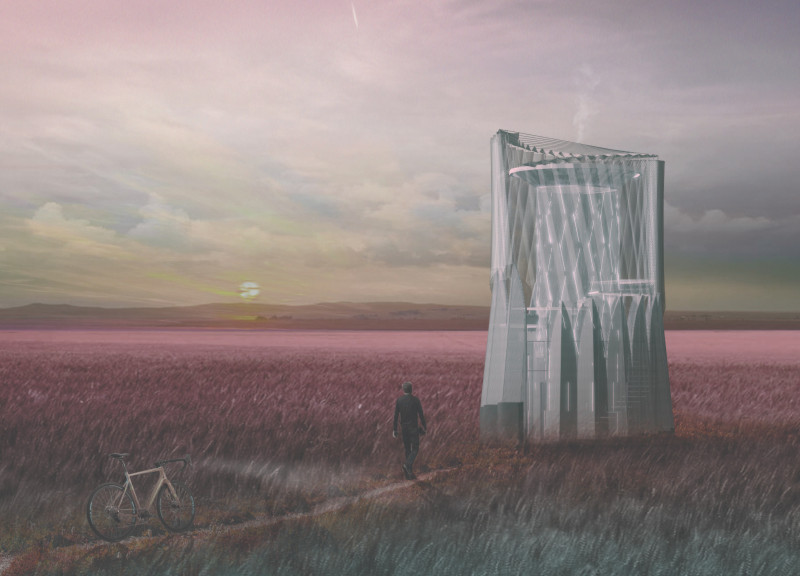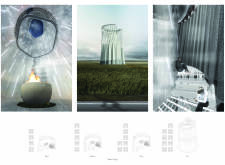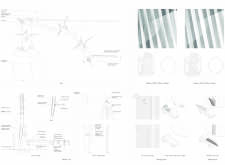5 key facts about this project
The project is located along the EuroVelo 6 route and is designed to serve the needs of cyclists and travelers who require a place to rest. The overall concept revolves around modular structures that connect with the natural surroundings. This creates shelters that are both functional and inviting, encouraging interaction among users. The aim is to enhance the experience of those journeying through this landscape.
Modularity and Functionality
The design is divided into three modules: the living quarter, the sleeping quarter, and the service quarter. Each module has a specific purpose, allowing for efficient use of space. The living quarter is intended for social interaction, where travelers can gather and share experiences. The sleeping quarter, situated at a higher level, is designed with stepped floors to provide privacy while still maintaining a sense of openness. The service quarter features essential amenities such as toilets, showers, and bike repair stations, ensuring that all practical needs of the visitors are met.
Connection to Nature
The architectural forms are designed to fit into their natural environment, focusing on a smooth relationship between the built structure and the landscape. This approach creates a calming atmosphere for users, allowing them to feel at home in their surroundings. The understated design enhances the experience of traveling, presenting these shelters as more than places to rest but as integral parts of the journey.
Material Use
Certain materials are carefully chosen to support both the appearance and function of the shelters. Polycarbonate is used to create a translucent enclosure that brings in natural light while maintaining privacy during the day. Additionally, ETFE, a lightweight and insulating material, helps to provide shade in warmer weather and retain heat during colder nights. This selection of materials addresses the challenges of the local environment and aligns with sustainability considerations.
Dual Purpose Design
The shelters offer a dual experience; during daylight, they blend with the landscape and appear unobtrusive. At night, the structures glow softly, inviting travelers in and creating a sense of safety. This ability to change appearance throughout the day adds to the user experience, transforming a simple shelter into a welcoming space that enhances the journey.
The living quarters include flexible seating arrangements, allowing users to adapt the space according to their needs. Soft lighting along pathways helps create a warm atmosphere for those arriving after dark, encouraging visitors to feel at ease in their surroundings.






















































